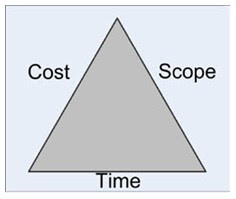Agile:MK
 Bringing together people living or working in the Milton Keynes area, who are interested in sharing, learning and encouraging the use of agile methodologies, such as Scrum, XP and Lean Thinking.
Bringing together people living or working in the Milton Keynes area, who are interested in sharing, learning and encouraging the use of agile methodologies, such as Scrum, XP and Lean Thinking.
November Meeting Summary
Thanks again to
everyone who attended the first Agile:MK meeting last month. All the feedback
received has been positive, and the intent of this bulletin is to ensure the
wider group gain some insight into the discussions that took place.
Item 1: Why are we here?We kicked off the session with a small exercise to identify what we believed a valuable user group would look like i.e. what is worth dragging yourself along to on a cold winter’s evening! The group wants to network locally, share experiences and learning, encourage the adoption of agile in Milton Keynes, and drink free beer…
Item 2:
Discussion Backlog
 During the initial exercise a large
number of discussion topics were identified, these were prioritised to provide
an on-going agenda for the user group. From this we were able to identify
January’s session as “State of the Art”:
During the initial exercise a large
number of discussion topics were identified, these were prioritised to provide
an on-going agenda for the user group. From this we were able to identify
January’s session as “State of the Art”:
Item 3: Scrum in a Non-Software Environment
The main part of
the session comprised a workshop discussion about using Scrum in a non-software
environment. One of our group has just completed their first sprint (4 week
iteration) and we started by understanding a little about the business. Mindmap of Non-Software Environment
 A general
discussion brought out the fact that the business’ primary functions are
stakeholder management, event management, workshop facilitation, fund-raising,
marketing and communications on behalf of non-for-profit organisations across
the UK.
A general
discussion brought out the fact that the business’ primary functions are
stakeholder management, event management, workshop facilitation, fund-raising,
marketing and communications on behalf of non-for-profit organisations across
the UK.
1. The team presents its outputs for the time period
i.e. in this example, the team should present its strategy for the client. This
should be presented to the business owner or customer of the product. The
purpose is to ensure that throughout the project as more and more sprints are
completed, the business understands what is being built and can feedback on
both its quality and alignment to business needs. The intent is to ensure that
the end result of the project is closely aligned to business needs.
2.
The team retrospects… The team asks
itself ‘what did we do well in the last 4 weeks?” “what went poorly or needs
improvement?” and finally “what are we going to do differently in the next
sprint?”
 These two
activities are fundamental to the successful adoption of Scrum and represent
the key objectives of firstly ensuring a deliverable meets the customer’s
needs, and secondly ensuring a team continuously improves its capabilities.
These two
activities are fundamental to the successful adoption of Scrum and represent
the key objectives of firstly ensuring a deliverable meets the customer’s
needs, and secondly ensuring a team continuously improves its capabilities. Definition of Done and Acceptance Criteria
The discussion group started to articulate the concept of ‘Definition of Done’. For any delivered feature or artefact, the team needs to ask itself “How well has the feature been completed?” “To what level of quality?”
The essential part of a Definition of Done is that it is created by the team. Typically, the Definition of Done consists of a list of standards and agreements that the team agrees to adhere to for each of its deliverables. Team members should be transparent about these criteria and effective teams are able to challenge each other when these criteria are broken.
So for the project at hand, the question for the team is “what does a high quality strategy consist of?
In contrast, acceptance criteria is a term used to articulate the needs of the customer i.e. what should the deliverable do, what pieces of the deliverable does the customer assign value to and will therefore, pay for? The group outlined that acceptance criteria are the ‘things the customer wants’. So for this project the deliverable of a Strategy would probably include acceptance criteria such as governance strategy, fund-raising strategy and communications strategy as part of the overall delivery. Other criteria could include being written in English, available for download, in pdf and PowerPoint formats.
Scrum Board

The Scrum board
is typically a white board displaying all the teams’ deliverables and
associated tasks. This makes the team’s activities transparent to everyone in
the room and this transparency can have a significant impact on the team and
management.
There are many
forms of scrum board, and two typical implementations highlighted were [To Do –
In Progress – Done] and [To Do – Analysis – Development – Test – Done]. We
further discussed the relative maturity of teams adopting different styles, as
well as queue identification and bottlenecks, and observed that more mature teams
typically need fewer steps across the board.  The next Agile:MK meeting will take place on Tuesday 15th
January 2013 from 6pm – 8pm.
The next Agile:MK meeting will take place on Tuesday 15th
January 2013 from 6pm – 8pm.The discussion topic will be “The State of the Art”

Comments